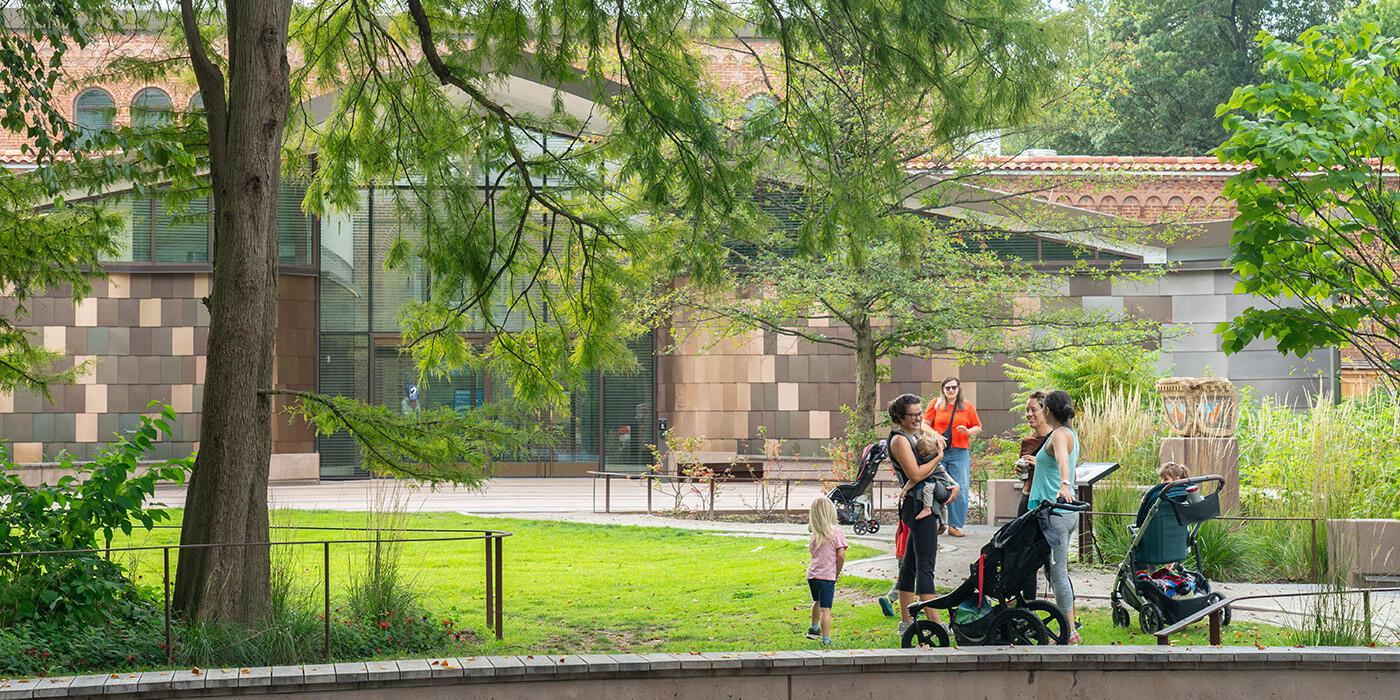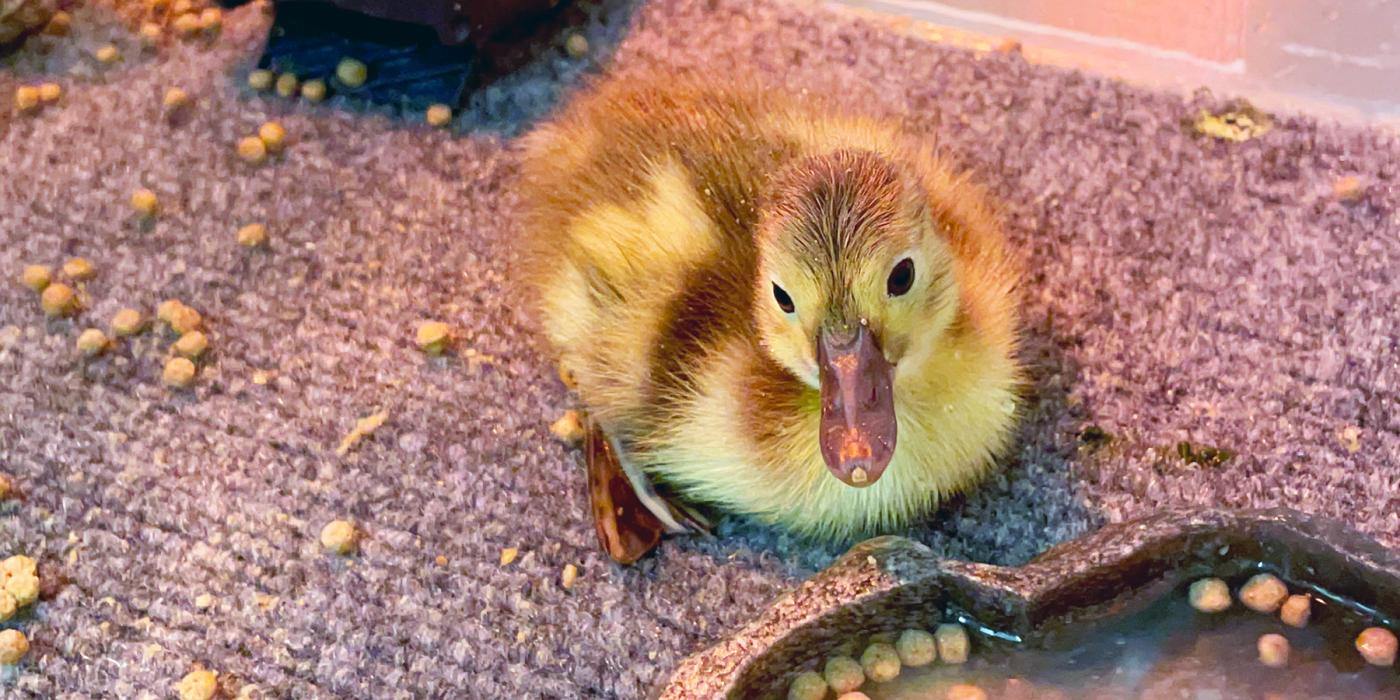'Little Critters' Drop-in Program Lets the Smallest Zoo Visitors Play Hands-On With Nature
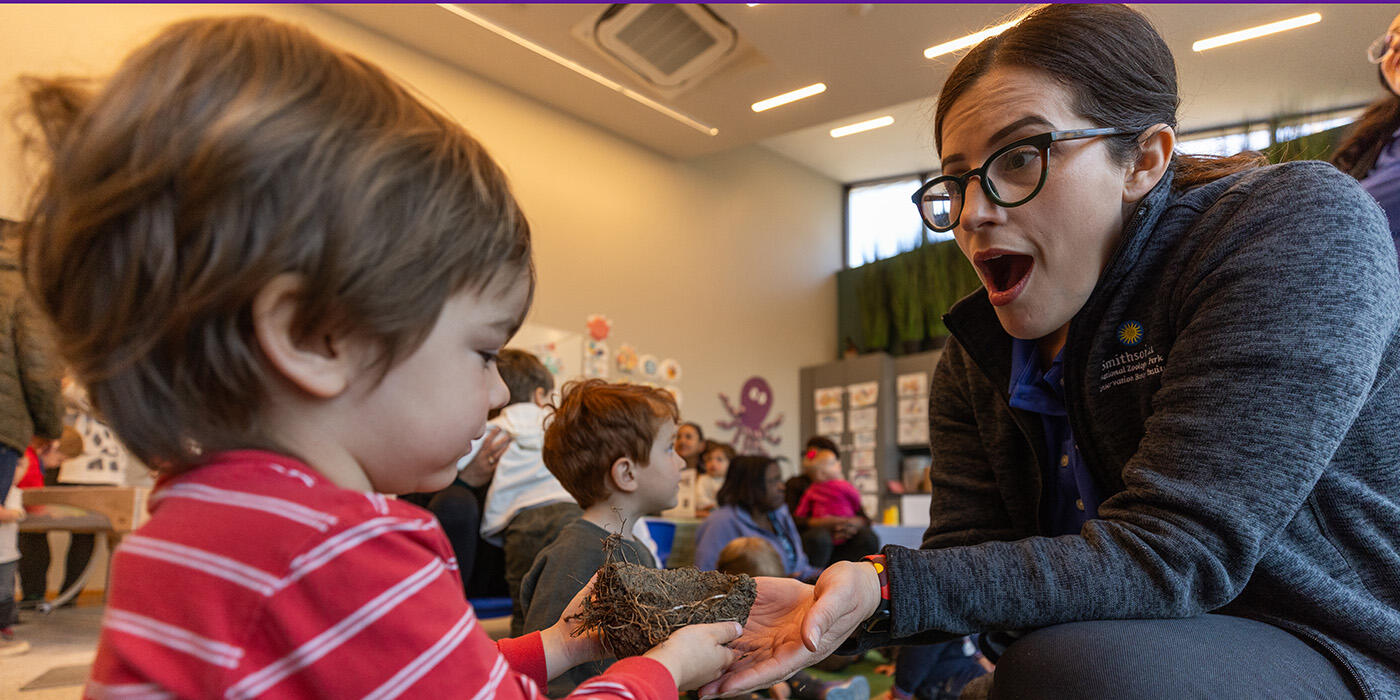
Hands-on play area at the Zoo helps small children and their caregivers find the fun in nature
At 10 a.m. on a sunny Tuesday, the classroom inside the Zoo’s Bird House exhibit is busy with excited toddlers.
“We’re learning about animal poop today,” education specialist Silvana Oderisi says to a curious toddler who just arrived. “Did you know that worm poop helps gardens grow?”
With help from their caregivers, toddlers dig through beans and sand to discover orange and brown puff balls, stand-ins for animal droppings. Plastic sampling containers have been strategically placed at the activity station to encourage kids to pretend to be poop-scooping animal biologists, but it’s up to each child to explore and decide how to play.
It’s all part of Little Critters: Nature Play, a free drop-in program where children ages 0–5 explore science and nature through hands-on, sensory-rich activities. And yes, that sometimes includes pretend poop.
Click here to see the Little Critters program calendar.
Drop-in programs for exploration and play
Held three times a week, Little Critters offers open-ended activity stations designed to help children learn about nature through play. The program is free of charge and there’s no registration required — guests can simply show up and dig in.
Inside classroom spaces at the Bird House and Think Tank exhibits, a variety of activity stations incorporate natural materials: bins of sand, tubs of seeds, patches of faux grass, piles of wood blocks, and hay to squish between fingers. On any given day, you might find children constructing animal homes from small logs or examining moss with magnifying glasses.
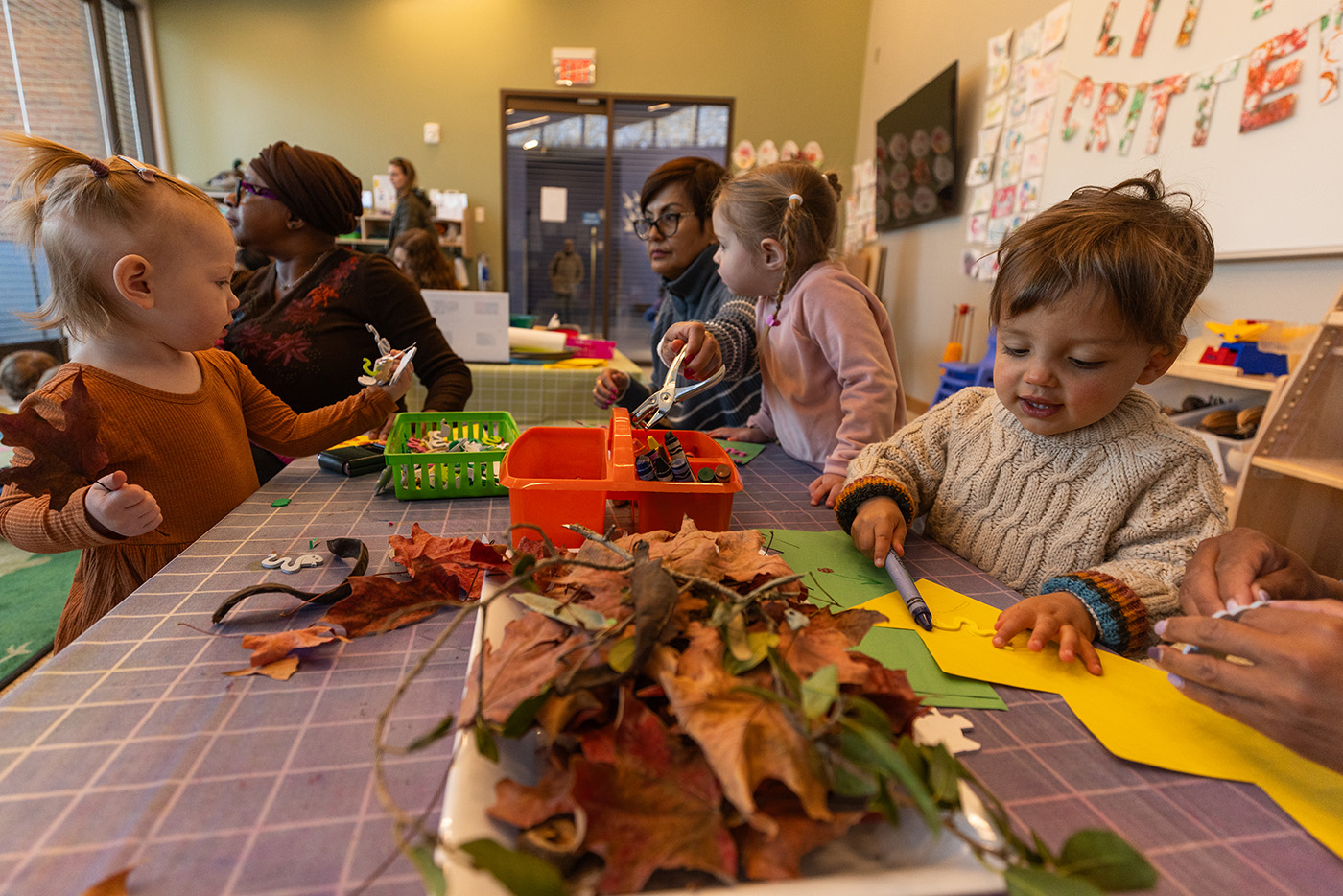
Crunchy leaves are a natural element children can interact with. (Smithsonian/Roshan Patel)
Oderisi says the goal is for kids to get their hands dirty — literally. “We want to get children comfortable with the 'gross' parts of nature, like dirt and bugs, before the negative stigma sets in. The more exposure they have to natural materials, the more comfortable they’ll feel in the natural world.”
Activities are designed to provide opportunities for young children to learn the basics of nature and science at their own pace. Rotating themes like pollinators, animal diets, veterinary care and animal habitats are reflected in each session’s activities, including story time, sing-alongs and process-based art tables.
The activities can even give children a chance to develop their vocabulary. “The other day, a parent told me after coming here, they heard their kid say ‘pine cone’ for the first time. That’s pretty cool.”
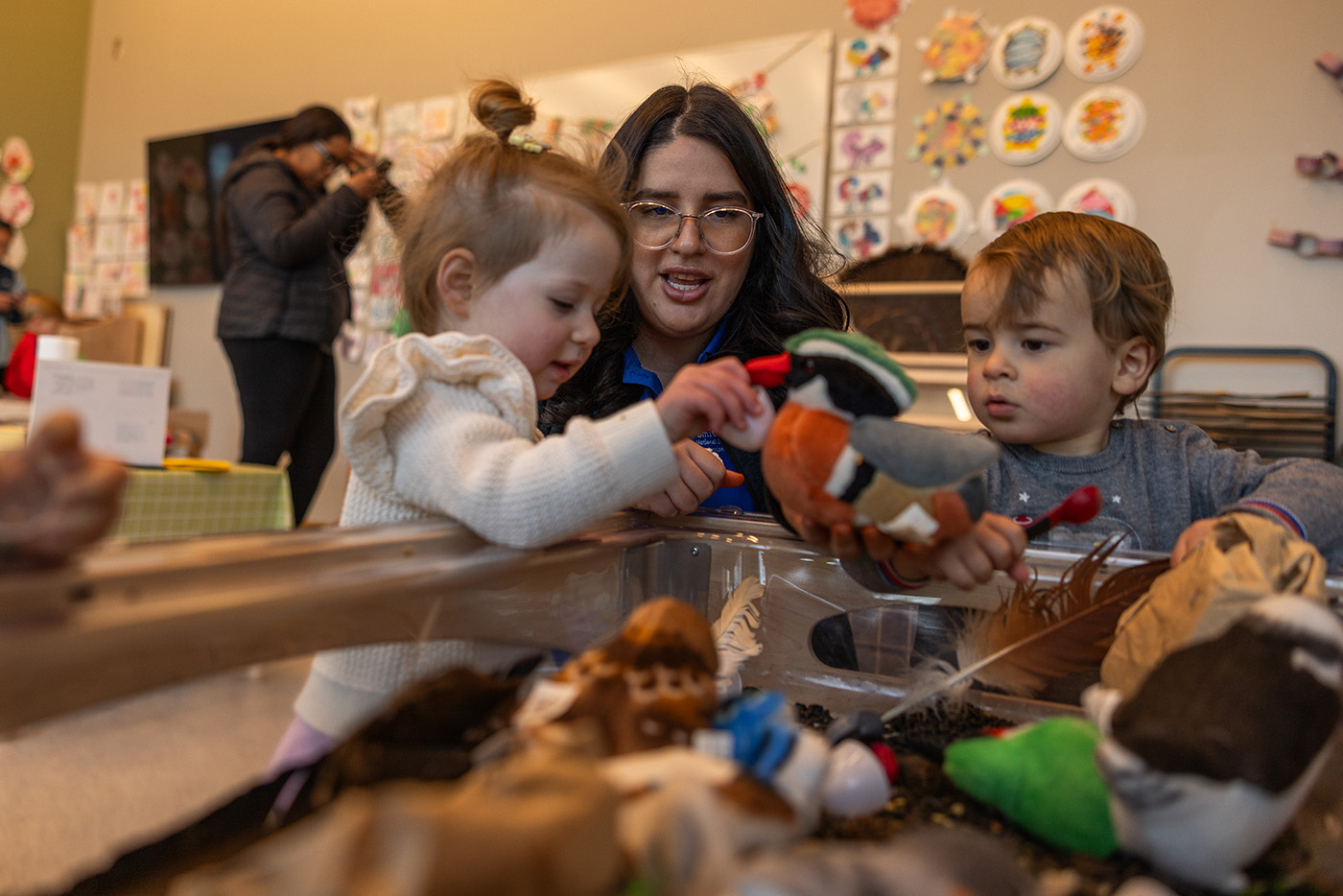
Children play together at a toy-filled activity station. (Smithsonian/Roshan Patel)
The science of nature-based sensory learning
While it may look like kids are simply having fun with leaves and dirt – and yes, even “poop” – the activities at Little Critters: Nature Play are actually rooted in the science of early childhood development. There’s plenty of research to support the idea that nature play has strong benefits to early learning, particularly when it comes to forming positive connections with nature.
The sensory-rich experience of being outdoors (or bringing natural items inside) can make the natural world accessible to a wider range of developmental levels. Since there’s no “right way” to play with sticks and leaves, children have greater freedom to direct and create their play, strengthening their decision-making skills while reinforcing self-confidence.
And the benefits to this program aren’t limited to early childhood, said Oderisi. By rooting the weekly themes in science and STEM learning concepts, activities can engage little children and caregivers alike. “I’ve heard adults say, ‘When I come to these sessions, I feel like I’m learning something, too.’”

A child explores a tub filled with dirt. (Smithsonian/Roshan Patel)
A place to build community
Though Little Critters only launched in early 2023, thousands participants show up each month, says Oderisi. The Zoo has even expanded the program by offering nature-based activities at other Smithsonian units, like the Air and Space Museum. This year, the Anacostia Community Museum partnered with the Zoo to launch family-friendly nature walks in one of Washington, D.C.’s urban parks.
Education specialists at the Zoo are also working behind the scenes to increase the impact of nature-based play and learning. Through professional development workshops, they’re helping to support teachers interested in integrating nature-based play into their own classrooms.
Beyond learning, the Little Critters program has seen some success in building a community of children and caregivers who see the classroom as a friendly, engaging environment. Interwoven between story time and singalongs, children can get a chance to introduce themselves to others, sometimes taking their first steps toward connecting with kids their own age.

Each session features a group story time and sing-along activities. (Smithsonian/Roshan Patel)
By offering a recurring low-stakes environment to play and learn, Oderisi says the classroom has become a place where connections can form between participants.
“We see many of the same caregivers and kids who come here week over week…there’s a natural community that’s building up over time, which has been really amazing to see.”
Come as you are, but before you do…
Looking to join the fun? Here are a few tips from the Little Critters educator team for making the most of your experience:
- Dress for a mess: Water bins and dirt tables are part of the fun, so you might want to bring an extra set of clothes (and maybe water shoes.)
- Snacks are welcome: Feel free to bring a light snack for you and your child.
- Looking for a less crowded day? Weekends tend to be less busy than weekdays. The classroom tends to be quietest before 10 a.m. and after noon.
Want more Zoo updates? Sign up for the National Zoo News and get updates on animal care, zoo events, and conservation delivered straight to your inbox.


